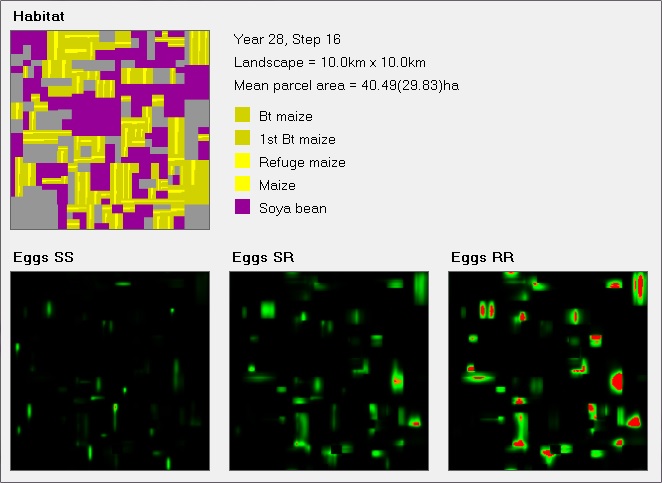The ebb and flow of pest populations: Epidemics, outbreaks, and their spread are never confined to a single field or farm. Even where the movement of pest individuals is restricted, the behaviour, ecological and, importantly, demographic links between them mean that a change in one location concerning a few pest individuals may spread quickly to affect the entire pest population. As a result the regulation of pest populations relies on their spatial dynamics and their response to control measures applied across the landscape. Using experimental approaches to tackle these geo-spatial aspects of IPM is almost impossible; instead we use modelling to explore the response of pests to and to design landscape scale pest regulation strategies.
 AgBioscape is a modelling system for the simulation of dynamic interactions between the composition and configuration of farming landscapes and populations of natural and semi-natural species that inhabit them, including crop pests. AgBioscape uses a generic modelling approach that couples a discrete time approach to modelling population dynamics with a landscape simulation model that simulates both landscape structure and composition, including the dynamics of crop sequences, crop management and other land use changes. See BOX 1 for an example of how we are applying this approach to develop geospatial approaches to IPM.
AgBioscape is a modelling system for the simulation of dynamic interactions between the composition and configuration of farming landscapes and populations of natural and semi-natural species that inhabit them, including crop pests. AgBioscape uses a generic modelling approach that couples a discrete time approach to modelling population dynamics with a landscape simulation model that simulates both landscape structure and composition, including the dynamics of crop sequences, crop management and other land use changes. See BOX 1 for an example of how we are applying this approach to develop geospatial approaches to IPM.
Structured block refuges are an important aspect of many high dose/refuge strategies designed to limit the evolution of pesticide resistance. As an example of our approach we have built a model of western corn rootworm (Diabrotica virgifera virgifera Le Conte) and used it to design structured block refuges to delay the development of Bt (Bacillus thuringiensis) resistance in maize.



